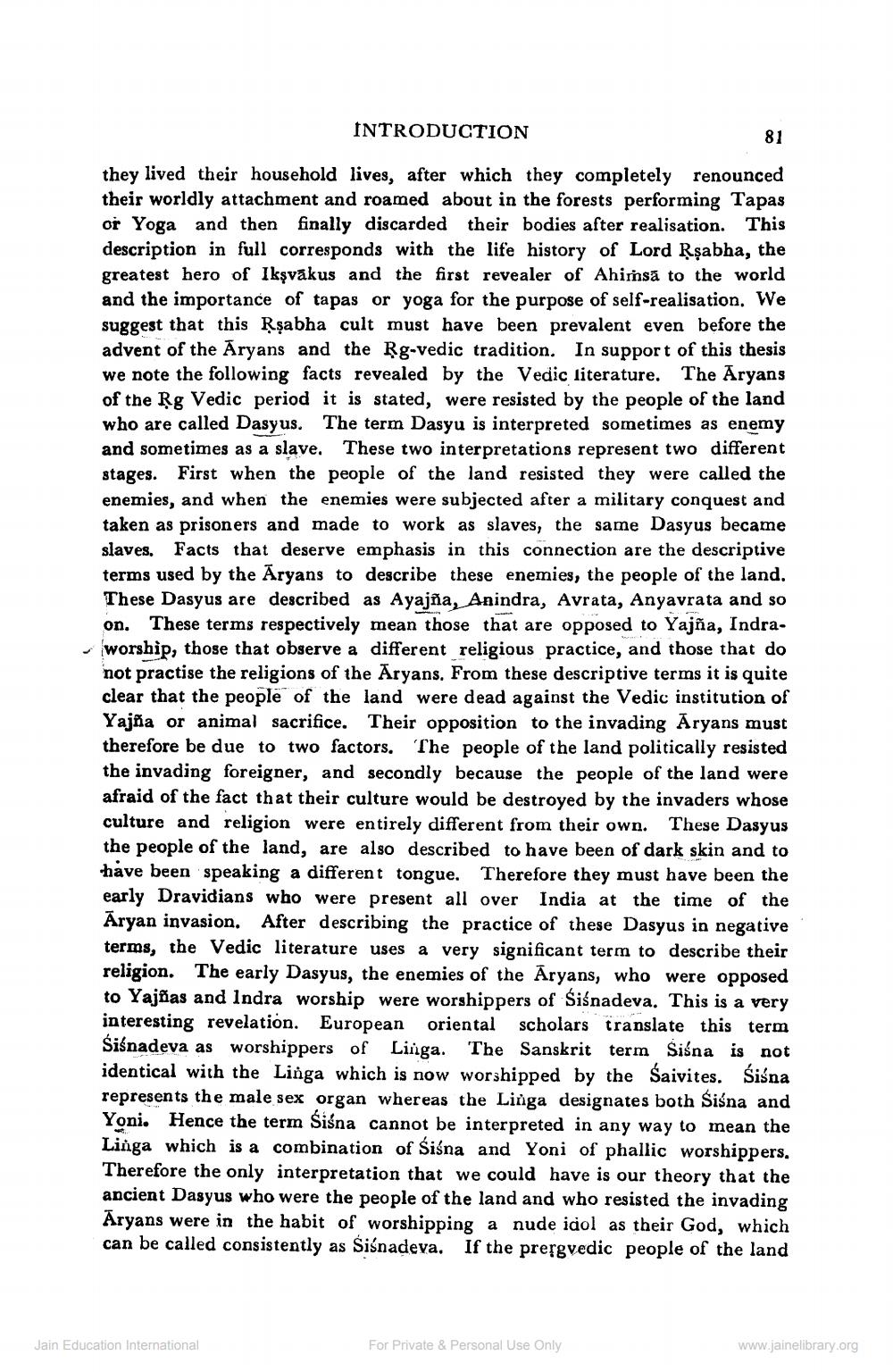________________
INTRODUCTION
they lived their household lives, after which they completely renounced their worldly attachment and roamed about in the forests performing Tapas or Yoga and then finally discarded their bodies after realisation. This description in full corresponds with the life history of Lord Rṣabha, the greatest hero of Iksvakus and the first revealer of Ahimsa to the world and the importance of tapas or yoga for the purpose of self-realisation. We suggest that this Ṛsabha cult must have been prevalent even before the advent of the Aryans and the Rg-vedic tradition. In support of this thesis we note the following facts revealed by the Vedic literature. The Aryans of the Rg Vedic period it is stated, were resisted by the people of the land who are called Dasy us. The term Dasyu is interpreted sometimes as enemy and sometimes as a slave. These two interpretations represent two different stages. First when the people of the land resisted they were called the enemies, and when the enemies were subjected after a military conquest and taken as prisoners and made to work as slaves, the same Dasyus became slaves. Facts that deserve emphasis in this connection are the descriptive terms used by the Aryans to describe these enemies, the people of the land. These Dasyus are described as Ayajña, Anindra, Avrata, Anyavrata and so on. These terms respectively mean those that are opposed to Yajña, Indraworship, those that observe a different religious practice, and those that do not practise the religions of the Aryans. From these descriptive terms it is quite clear that the people of the land were dead against the Vedic institution of Yajña or animal sacrifice. Their opposition to the invading Aryans must therefore be due to two factors. The people of the land politically resisted the invading foreigner, and secondly because the people of the land were afraid of the fact that their culture would be destroyed by the invaders whose culture and religion were entirely different from their own. These Dasyus the people of the land, are also described to have been of dark skin and to have been speaking a different tongue. Therefore they must have been the early Dravidians who were present all over India at the time of the Aryan invasion. After describing the practice of these Dasyus in negative terms, the Vedic literature uses a very significant term to describe their religion. The early Dasyus, the enemies of the Aryans, who were opposed to Yajñas and Indra worship were worshippers of Siśnadeva. This is a very interesting revelation. European oriental scholars translate this term Śiśnadeva as worshippers of Linga. The Sanskrit term Siśna is not identical with the Linga which is now worshipped by the Saivites. Śiśna represents the male sex organ whereas the Linga designates both Siśna and Yoni. Hence the term Śiśna cannot be interpreted in any way to mean the Linga which is a combination of Siśna and Yoni of phallic worshippers. Therefore the only interpretation that we could have is our theory that the ancient Dasyus who were the people of the land and who resisted the invading Aryans were in the habit of worshipping a nude idol as their God, which can be called consistently as Siśnadeva. If the prergvedic people of the land
Jain Education International
For Private & Personal Use Only
81
www.jainelibrary.org




